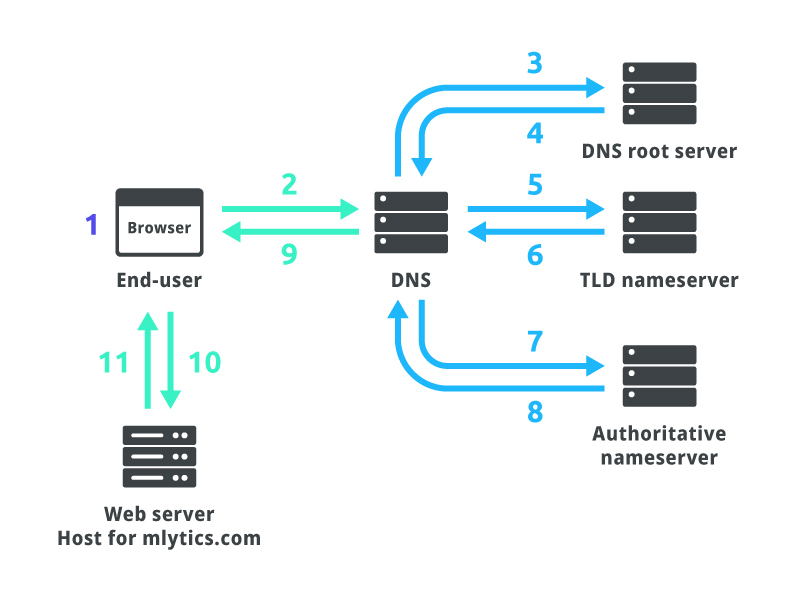
A load balancer diagram depicts a network of servers. Each server is assigned a particular weight or amount of power. Clients request an application to the most powerful server. Two of your application servers might be two times more powerful than the third. Clients will request identical amounts of data from each application server. However, the requests will be sent to different servers.
Hashing algorithm
Diagram of a Load Balancer shows how requests are routed from healthy servers to those with IP addresses. Load Balancing is a common process that uses the Hashing algorithm. Each client request is uniquely identified by the Hashing algorithm. The hashing results are used to send the request to the appropriate server.
It is essential to havehing in distributed systems. This allows requests to be mapped equally between servers in a cluster. It reduces the work required by the cluster to maintain consistent hashing across nodes when a ring changes.
Connection multiplexing
Connection multiplexing can be used to distribute traffic between multiple servers. When a client initiates a request, the load balancer picks the appropriate service. ADC must keep track if the user initiates follow-up traffic. This is an important task since follow-on trafic may present two specific problems: persistence or connection maintenance.

Connection multiplexing in a load balancer diagram can be done by dividing the total number of connections by the number of servers. Each server has an assigned port and an IP address. The load balancer receives a request for particular services and will rewrite the packet to include its destination IP address.
SSL tunnel
SSL passthrough is an effective method of configuring SSL in a load balancer. It makes it easier to manage certificates because all encryption work and decryption work is done on the loadbalancer. SSL passthrough protects traffic between the loadbalancer and backend servers. However, it can expose customer data to other network instances. This is why it is recommended for networks with less security.
SSL passthrough consumes more CPU cycles and increases operational costs. This method is not recommended for high-traffic deployments. It doesn't allow you to create access rules, sticky sessions or redirects. This makes it suitable only for small-scale deployments.
Network server load balancer
A load balancer is a network device which rewrites packets to ensure they reach their destination. A loadbalancer can handle different types and traffic depending on their source IP. The process of load balancing involves multiple servers. The first server acts a "frontend", receiving traffic from the Internet and forwarding it to the second server. A second server acts as a "back-end" and answers requests from clients.
The load balancer can be a hardware appliance or a software-based virtual device. A load balancer automatically redirects a user's requests towards other servers when a single server goes down. If another server is created, it will automatically transfer requests.

Kubernetes load balancer
The Kubernetes loadbalazer diagram illustrates how the two pods handle requests and responds. The problem with this approach is the inability to account for persistent connections. This means that load balancing should be implemented on the client side by the application. There are many solutions to this problem, such as kube proxy and iptables. However, these solutions are only intended for the most common deployment scenarios and do not take into account the specific requirements of specific applications.
Kubernetes permits each pod to have its unique IP address. The above diagram shows that each red pod sends requests to a service having a fixed address. The controller will then collect the currently pending Services, and assign them unique IP address to deliver incoming packages.
FAQ
What is a static web site?
A static website is a site where all content are stored on a server, and visitors can access it via web browsers.
The term "static" refers to the fact that there are no dynamic features such as changing images, video, animation, etc.
This site was initially designed for corporate intranets, but it has been adopted by individuals or small businesses who desire simple websites that don't require complex programming.
Static sites have become increasingly popular because they require less maintenance. They are much easier to maintain than fully-featured sites with many components (such a blog).
They load much faster than dynamic counterparts. This makes them perfect for users who are using mobile devices or have slow Internet access.
A static website is more secure than its dynamic counterparts. You can't hack into a static site. Hackers only have access the data in a database.
There are two main methods to create static websites:
-
Using a Content Management System (CMS)
-
Static HTML Website Creation
The best one for you will depend on your specific needs. A CMS is the best choice for anyone who is new to building websites.
Why? Because it gives you complete control over your website. With a CMS, you don't need to hire someone to help you set up your site. Upload files to the website server.
You can still learn to code and make a static website. It will take some time to learn to program.
Do I Need Any Technical Skills To Design And Build My Site?
No. You just need to be familiar with HTML and CSS. Online tutorials can be found that cover both HTML and CSS.
How Do I Choose A Domain Name?
It is important that you choose a domain name that is memorable. People won't know where to go if they don't have a good domain name.
Domain names need to be short and simple to remember, relevant for your brand, and unique. In order to make your domain name memorable, people should be able to type it into their browsers.
Here are some ideas to help you choose a domain.
* Use keywords related to your niche.
* Avoid using hyphens (-), numbers and symbols.
* Don't use.net or.org domains.
* Never use words that have already been used.
* Try to avoid generic terms like "domain" or "website."
* Check that it is available.
How to design your website?
The first step is to understand what you want your site to do for your customers. What are they looking for when they visit your site?
What issues might they be facing if they can't locate what they're looking at on your site.
Once you know this, you must figure out how to solve those problems. You also need to make sure that everything on your site looks right. It should be easy to navigate.
Your website should be well-designed. Make sure that it doesn't take too long to load. If it does take too long, people won't stay as long as they would like to. They'll go somewhere else instead.
When you are building an eCommerce site, it is important to consider where all your products are located. Are they in one place? Are they all in one place?
Decide whether you plan to sell one product at a time or several products. Are you interested in selling one type of product? Or multiple types?
Once you have answered these questions, you can begin building your site.
Now it is time to focus on the technical side. How will you site function? Is your site fast enough to be useful? Are people able to get it done quickly from their computers?
Will it be possible to buy something online without paying any extra? Will they have to register with your company before they can buy something?
These are the essential questions you should ask yourself. Once you know the answers to these questions, you'll be ready to move forward.
What is the best platform to design a website on?
WordPress is the best platform for creating websites. It offers all the features that you need to build a professional-looking website.
Themes are easy-to-install and customizable. There are many themes to choose from online.
Plugins are another way to add functionality. They can do everything, from adding social buttons to creating contact pages to adding forms.
WordPress is very easy to use. You don’t need to know HTML code to edit your theme files. To change your theme files, all you have to do is click on an image and select the desired changes.
While there are many options for platforms, WordPress is my favourite. It has been around forever and is still widely used by millions.
Statistics
- It's estimated that chatbots could reduce this by 30%. Gone are the days when chatbots were mere gimmicks – now, they're becoming ever more essential to customer-facing services. (websitebuilderexpert.com)
- Studies show that 77% of satisfied customers will recommend your business or service to a friend after having a positive experience. (wix.com)
- The average website user will read about 20% of the text on any given page, so it's crucial to entice them with an appropriate vibe. (websitebuilderexpert.com)
- Is your web design optimized for mobile? Over 50% of internet users browse websites using a mobile device. (wix.com)
- In fact, according to Color Matters, a signature color can boost brand recognition by 80%. There's a lot of psychology behind people's perception of color, so it's important to understand how it's used with your industry. (websitebuilderexpert.com)
External Links
How To
Drupal 7 Web Design: How to use it
Drupal is one of most well-known Content Management Systems (CMS), available today. It was developed back in 2003 by Dries Buytaert from Belgium. The name of the site is derived by Dirk Buijtewaard's surname and Pierre d'Herbemont's surname. Drupal was made open-source in 2005. Since then, many versions have been released. Drupal is widely used today by companies and websites around the globe.
Drupal is a popular choice for website owners because of several reasons. First, it is free to download and install. It's also very easy to customize it and extend it. It is well documented. It provides tremendous support via IRC channels and forums. Fifth, it is extensible via modules. Sixth, it supports multiple language versions. It is easy customizable. Eighth, it's scalable. It is safe. Tenth, reliable. Finally, Drupal is supported by the entire community. Drupal is a good choice for your next project due to all of these factors.
You might wonder what makes Drupal stand out from other CMS platforms. It's simple. Drupal is an open-source content management system. Drupal is completely open-source and freely available for download. Drupal gives you complete control of your website. You can add or remove pages, change colors, fonts, images, videos, etc.
Drupal is the best option if you lack technical skills but want to build a website. You don't have to be a programmer to build your website, unlike other CMS. Learn how Drupal works. You will then be able modify your website to suit your needs.
Drupal offers many plugins and themes that can be used to enhance your site's functionality. These plugins allow you to improve the functionality of your site. You can use Contact Form to gather visitor information. Google Maps also allows you to display Google Maps on your website. Drupal comes with many ready-made templates. These templates give your website a professionally designed look.
Drupal is flexible, too. Drupal can be used to create new modules or to replace existing ones. If you need to integrate social media in your website, it can be done quickly. You can also setup RSS feeds or e mail subscriptions.
Drupal is customizable. You can add custom fields and forms, manage users, and more. Drupal allows you to create complex layouts.
Drupal is also reliable and sturdy. It is stable and can scale. It has excellent security features. Drupal is well worth looking into if you are looking for a web development platform that works.